THE HUMANIST SHOW: Miriam Beerman, Jacob Landau and Sheba Sharrow
THREE ARTISTS ARE CURRENTLY ON VIEW AT JAMES YAROSH ASSOCIATES: Now On View through December 18, 2021
The bodies of work of three museum-recognized artists are being revisited as part of a curated exhibit that explores the different artistic answers each creator has to similar humanist subjects—but mainly to highlight how we are very much the same.
The artists in The Humanist Show at James Yarosh Associates are all from a similar era and likeminded in their philosophy of using art as a form of activism. Now, their voices have the opportunity to be heard again in an exhibit that allows visitors to experience their interaction and to feel how great art can emote in ways words alone cannot.
The arts always have been an intellectual engagement first; the conversations of artists are the most revealing of that fact and tradition.
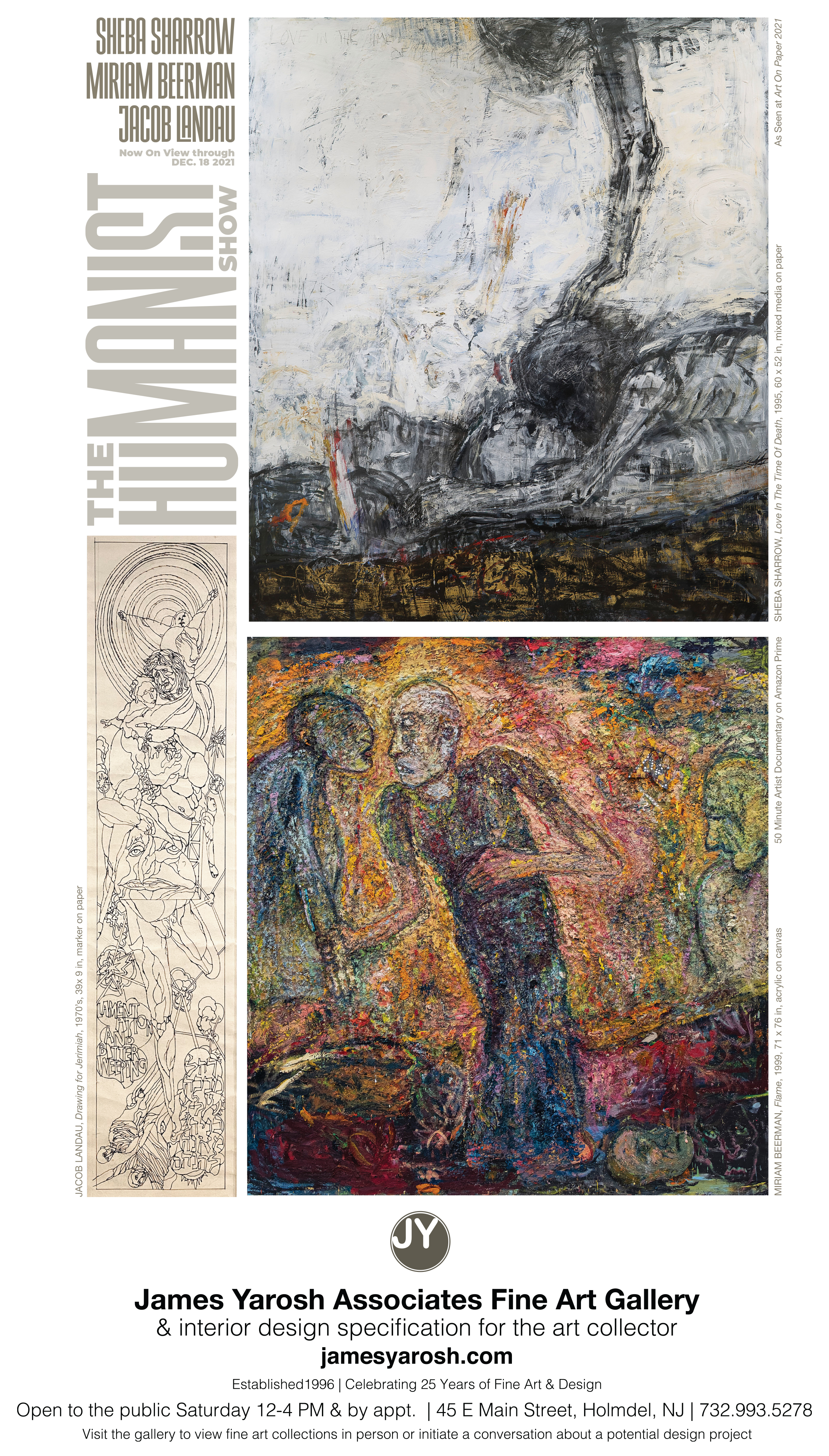
The common theme is: artists using their talents and great minds to illustrate empathy. They provide lessons and find answers to issues confronting human welfare and respond to human suffering. Artists rely on their acute sensitivity to create and thus can become compelled to employ art to “bear witness” to the injustices they see around them.
Since his eponymous gallery opened in 1996, Yarosh’s intentions have remained clear for the gallery’s art representation: to use an artist’s eye and the very human approach of showcasing works that resonate with viewers. Curation begins with valuing art for art’s sake. Beauty is deeper than the surfaces of great art. When we view art, we share journeys through the artists’ minds, connecting us through the feelings and responses we share in the experiences of life. How lucky for collectors who embrace works that define our culture and are able to participate in the continuum!
Cultural Conversations
Each artist in this exhibit was born nearly a century ago and yet the energy of their art still feels very forward, unafraid of moving viewers today to go outside of their initial comfort zones.
The exhibit also captures the lifetime of learning that goes into a work of art and the honing of an artist’s voice at each stage of their career. An artist faces a canvas bravely, taking on subjects and often creating from nothing, just trusting their voice.
The results can become very layered and require sophistication to recognize what each artist achieved. We need open minds to view ourselves in the subject matter, beyond the simplicity of “portrait, still life and landscape,” and an investment of time to discover the depths of the work. The rewards are ultimately greater for the soul once this is understood.
In the artist documentary Expressing the Chaos, Miriam Beerman, then 90, says, “You have to do some work. I think it’s clear by now I’m not interested in painting pretty pictures.” In a 1988 catalog, Beerman referred to Sheba Sharrow as “one of the finest women artists of our time.” Sharrow mentioned often that she did not see art as entertainment and although her drawing and painting skills are brilliantly seductive, her work tends to stir the conscience. Jacob Landau was unabashedly outspoken to use his art as a flag, warning of threats to mankind if we didn’t choose change. Presenting Landau as the only male artist in the exhibit, the show shifts the dynamic of this era when males dominated the art world.
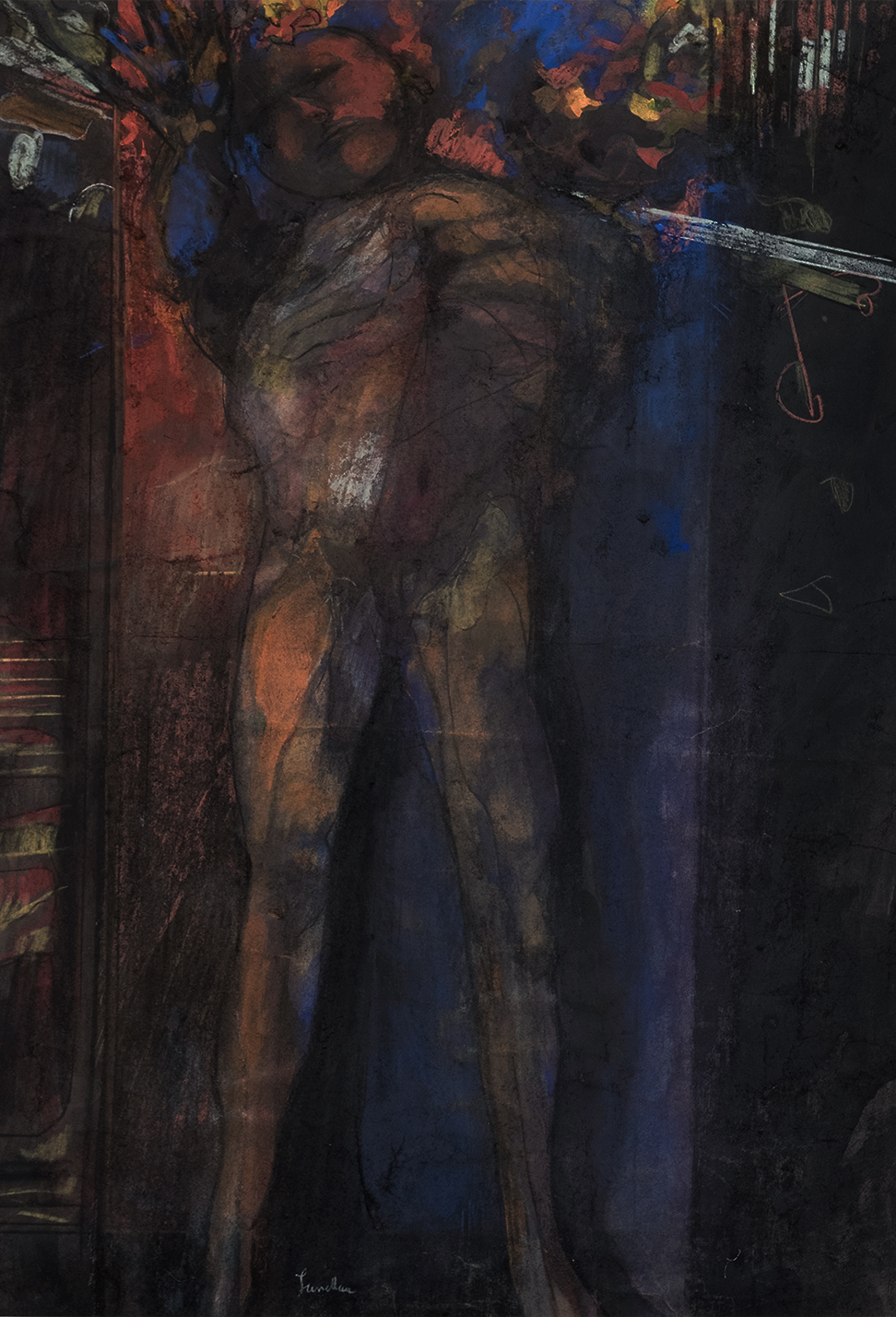
JACOB LANDAU, "Man and Technology - Dark" 1990's, 14in x 20in, watercolor on paper
Yarosh says of the three artists: “Landau’s drafting offers exacting lines that put images in order and organizes thoughts as if he were confronting technology head-on. His mapping of paths of a new world orchestrates, almost scientifically, an equation of what will become of mankind when our humanity becomes obsolete in the name of progress.”
“Sharrow’s expressionism is direct, using both force and tenderness. The lyrical line of her hand becomes a visual poetry. Her art has an elegance, embracing formal balances of good to overcome trauma and transmute it into art. Themes of mortality are explored and revisited throughout, knowing that beauty can only be seen by knowing the sadness of its polar opposite, allowing us to understand both highs and lows as forever tied into life’s journey. Her work speaks lovingly, even if with fearless candor, acknowledging that with awareness come burdens.”
“Beerman’s work and subject matter is near primal with color. Her hands in combat, she does not shy away from the bruises of pain as these come with the safety net of a momentary intoxication, compelling her to revisit subjects like moth-to-flame to further the act of creation. Beerman’s work exalts winning the battles in life. There is even humor — albeit sometimes akin to nervous laughter — in the face of demons. The result is an art, bursting and satisfying like ripe fruit, on a precipice edged along the past, present and future, embracing living in the current moment.”
“With all of these artists, however, their messages focus on the ever-present option of choosing beauty,” he continues. “This fact is evident with the beautiful handling of their mediums, with which they simultaneously create intoxicating subplots for our eyes and reward us for not looking away, for being present in the noble act of viewing art.”
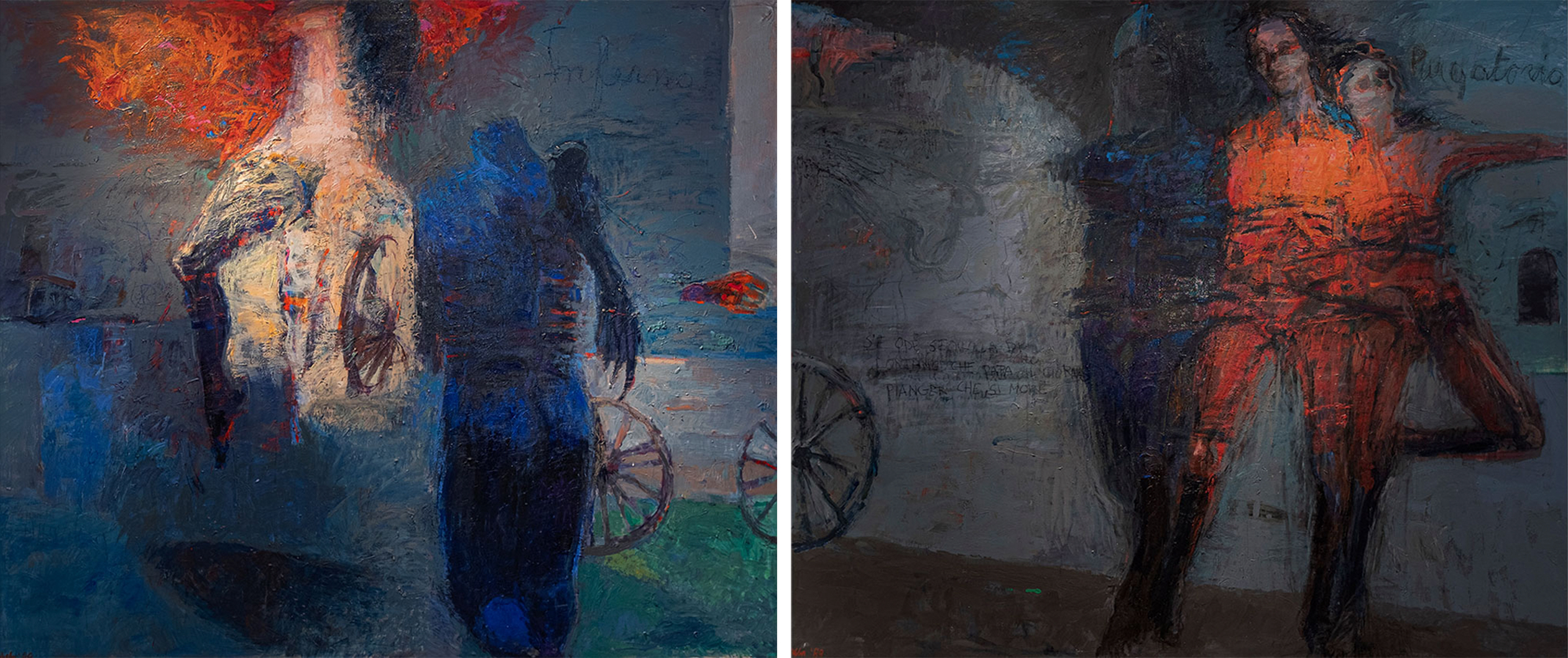
SHEBA SHARROW, "Inferno" 79in x 69in/ "Purgatorio", 80in x 69in, acrylic on canvas
Yarosh, an artist, interior designer and gallerist, notes his gallery always has favored the idea of being more of an artist’s home, open to the public to allow people to uncover the merits of the art that “we as artists know is great.” There is an unfortunate chasm between the works collected and exhibited at museums and what galleries offer, catering to a limited concept of what people hang in the home. Artists are more interesting as they color outside the lines of restriction; it is better to follow their lead of subject matter to uncover the truths they expose. It’s fascinating to see a body of work in hindsight. Reviewing an artist’s oeuvre as a lifetime body of work offers advantages in appreciation for both dealers as well as collectors. Seeing the art through the lens of the artist’s life story allows us to more clearly understand the path they took to greatness. It is important to view artists’ works in the context of their times and also see how it still holds up today with continued interest.
“I am excited to be able to offer works by Beerman, Landau and Sharrow to collectors on a gallery level,” Yarosh says. “Their art is much bigger than many realize and even as an art dealer, I'm still discovering more as I live with these great works. As time goes on, I realize how much more there is to learn in life. These artists are our teachers, and I have always put my faith in the arts. I feel very encouraged for the future of humanist artists when I see important exhibits like Alice Neel: People Come First currently at the Metropolitan Museum. These artists’ bodies of work live on and the conversations of humanity always will connect us as long as we continue to exist."
The Humanist exhibit at James Yarosh Associates gallery offers a window into the artists’ world in an accessible setting that allows us to meet the artists’ works up close. Works on view include large-scale canvases, works on paper and artist books of mixed-media/collage. The gallery is open to the public Saturdays 12-4 p.m. and by appointment. Previews of the show can be seen on the What’s New page on the gallery’s website, www.jamesyarosh.com.
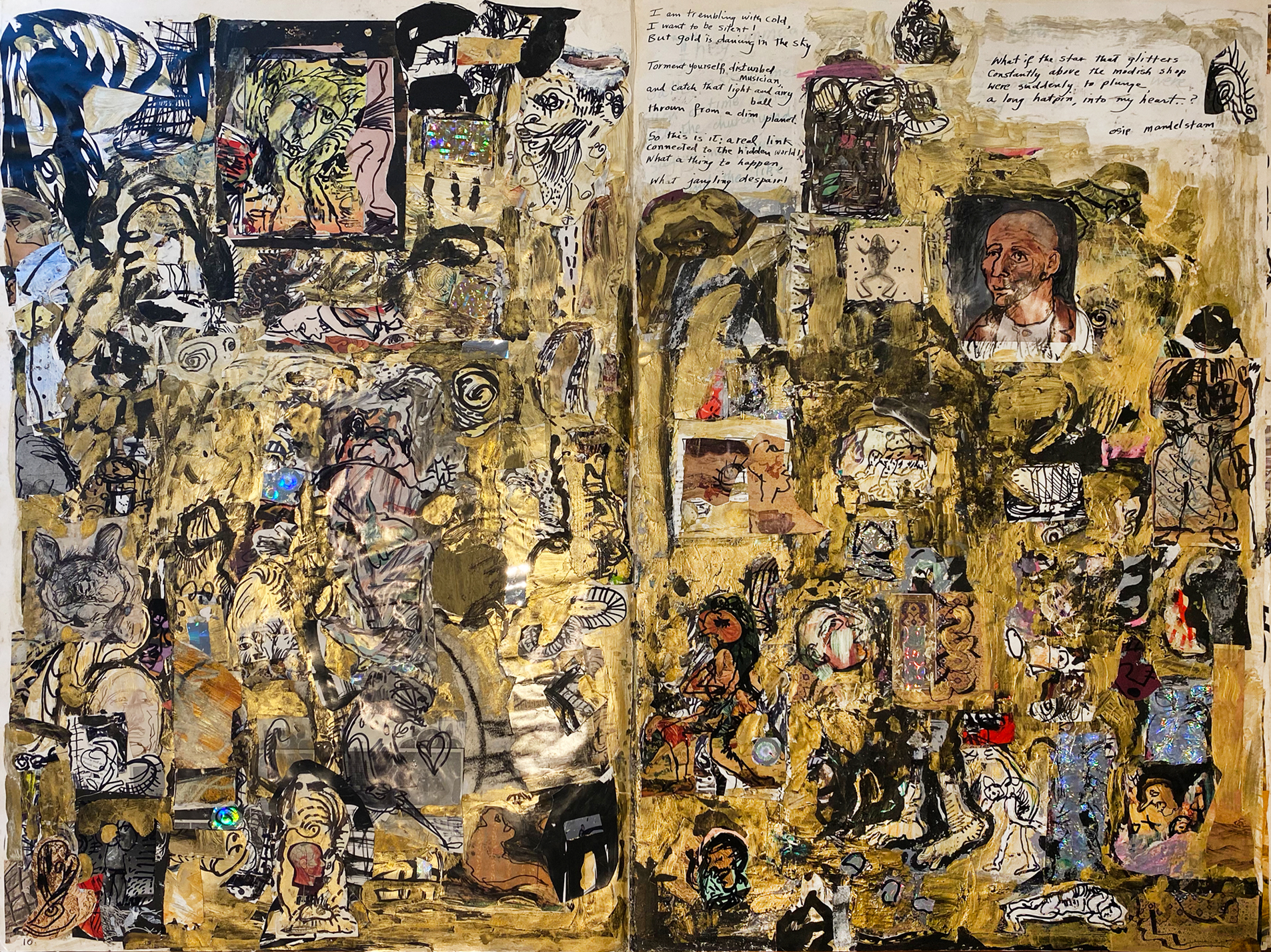
MIRIAM BEERMAN, “3 Sentences beginning with S - Artist Book Detail”, 1991 35in x 46in, mixed media/ collage on paper
Miriam Beerman
Beerman (b.1923) is a contemporary maker of painterly power objects, imbuing the paint with profound psychology as well as beauty. Her subject has been the arena of the human condition, whether expressed overtly with imagery evoking genocide or abstractly through the call-and-response of process. These works are serious paintings offering a lifetime of contemplation and stimulating a depth of thought. Beerman has contributed to the contemporary involvement in art as a political tool to alter consciousness.
In 2015, Beerman, one of the first women to have a solo show at the Brooklyn Museum, was the subject of the 50-minute artist documentary Expressing the Chaos, a film that is available to stream on Amazon Prime and YouTube outlets. Material on Beerman’s art currently is being compiled, detailing the over 60 U.S. and European museums which include her work in their collections. She will be the focus of an Artist in Spotlight exhibit at James Yarosh Associates Fine Art Gallery for the Fall 2021/Winter 2022 season.
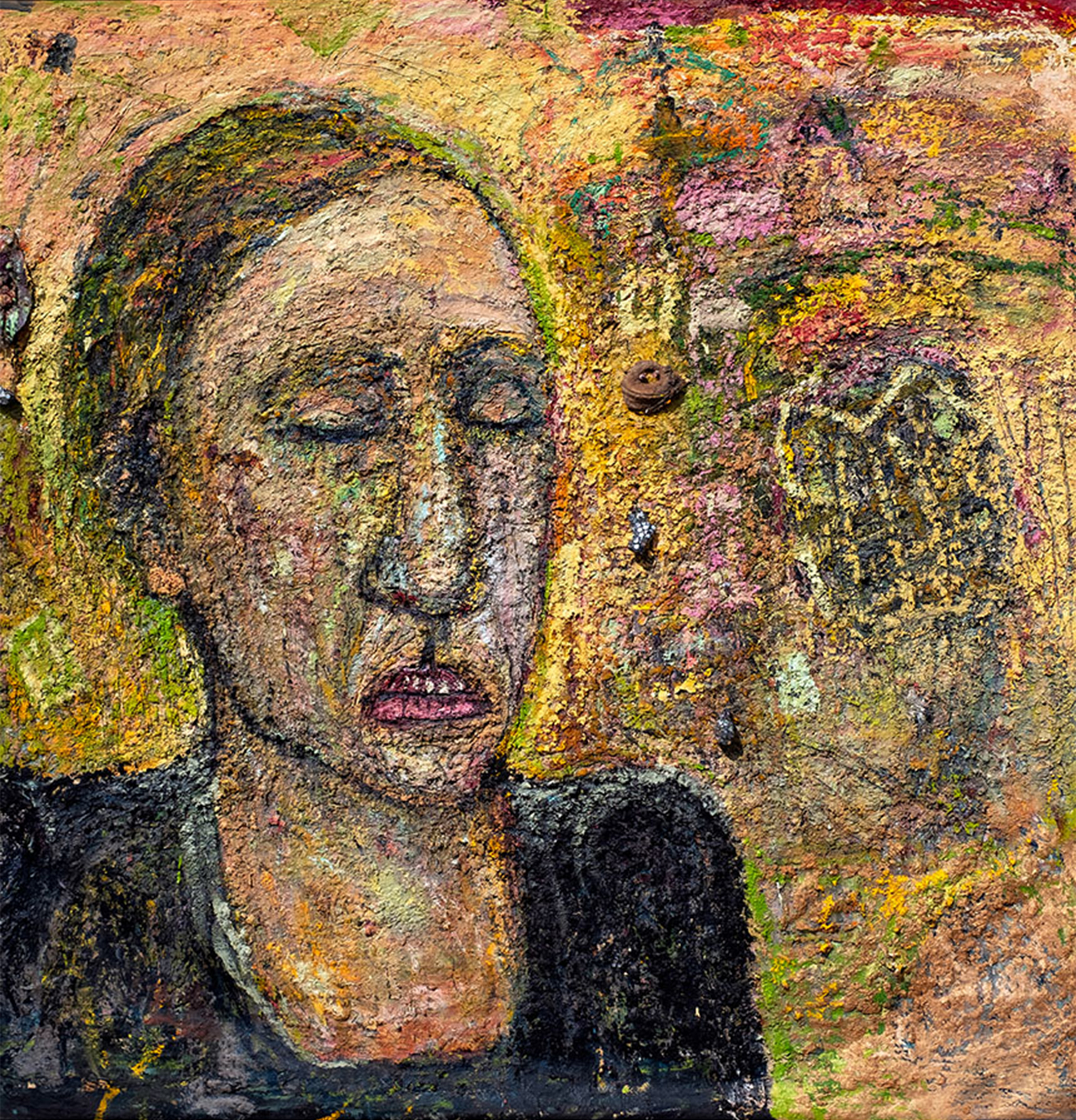
MIRIAM BEERMAN, "Nothing Has Changed", 1999, 68in x 67in, oil on canvas/ Mixed Media
Jacob Landau
Landau (1917–2001) was an American artist best known for his evocative works on the human condition. Typically, his works address the Great Depression, World War II and the impact of technology and politics on individuals and their surroundings. Landau’s works can be found in the permanent collections of the Metropolitan Museum of Art, the Library of Congress, the Museum of Modern Art and the National Gallery. The 2021 book The Prophetic Quest: The Stained Glass Windows of Jacob Landau brings his artistry to the fore, revealing the magnitude of a series of ten monumental abstract stained-glass windows, created by Landau for the Kenneth Israel synagogue just north of Philadelphia, depicting the lives and words of the biblical prophets.
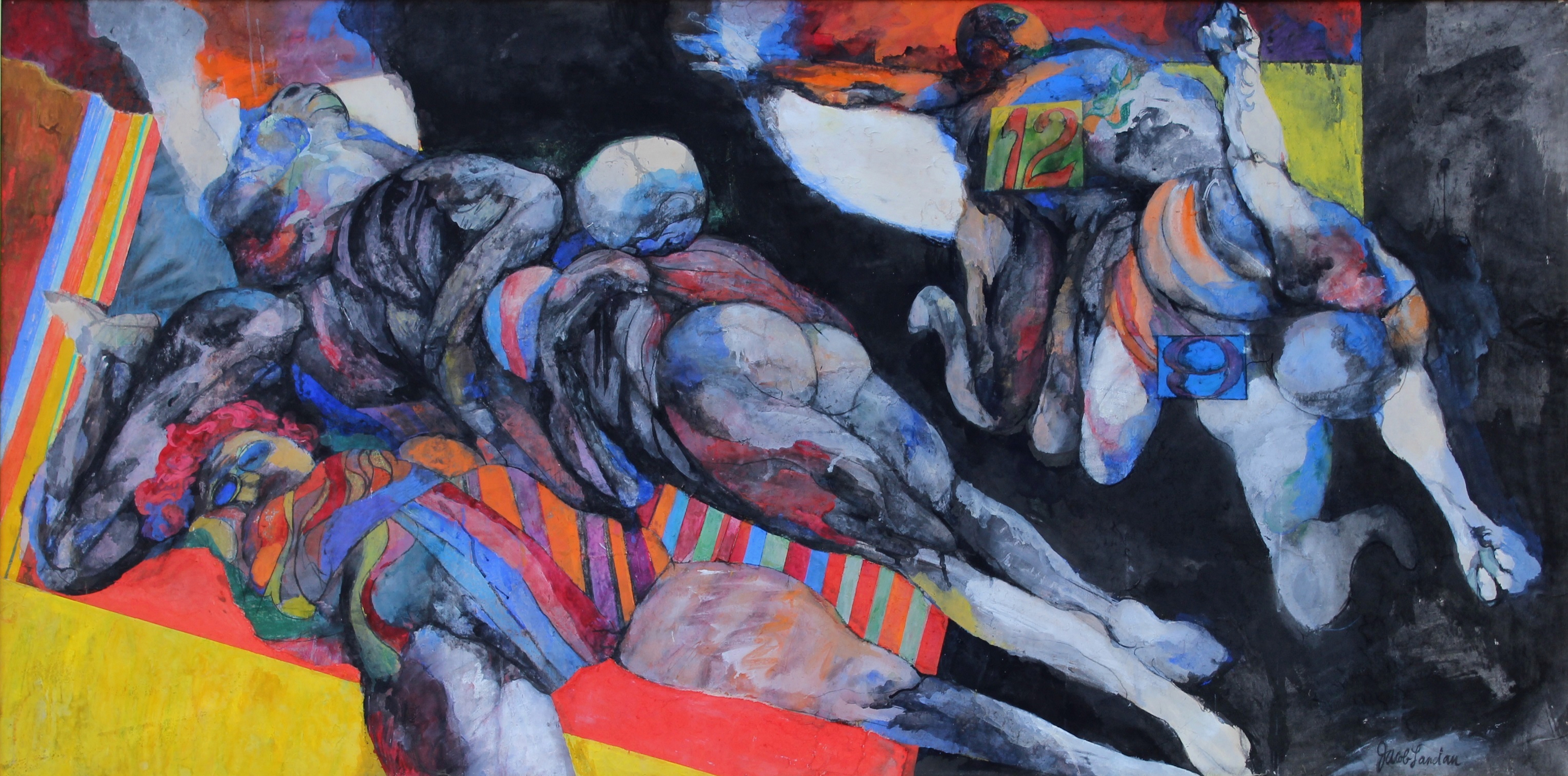
JACOB LANDAU, "The Lost Comic series" 1960's, 36in x 72in, mixed media on paper
Sheba Sharrow
Sharrow (1926–2006) was born during the Great Depression and came of age during World War II. Her art exemplifies an artist with eyes wide open. Her expressionist paintings of abstract humanity are masterful in execution, poetically engaging us with topics such as mortality, desire, vulnerability, power, warfare and spirituality.
In 2017, Monmouth University’s exhibit Sheba Sharrow: Balancing Act was co-curated by James Yarosh Associates Fine Art Gallery, and in 2020, Sharrow’s art was the subject of the solo exhibit History Repeats at James Yarosh Associates Gallery. Opening in September 2021, Sharrow’s multi-paneled painting “The Dateci Quartet,” in the collection of the Zimmerli Art Museum at Rutgers University, is the basis for its exhibition Dateci: Sheba Sharrow and Primo Levi and a subject of an online discussion led by Margaret Olin, Senior Research Scholar at the Yale Divinity School, entitled Social Justice as a Theme in Jewish Art. Sharrow’s work can also be seen in the Art on Paper NYC art fair in September 2021 with Exhibitor James Yarosh Associates.
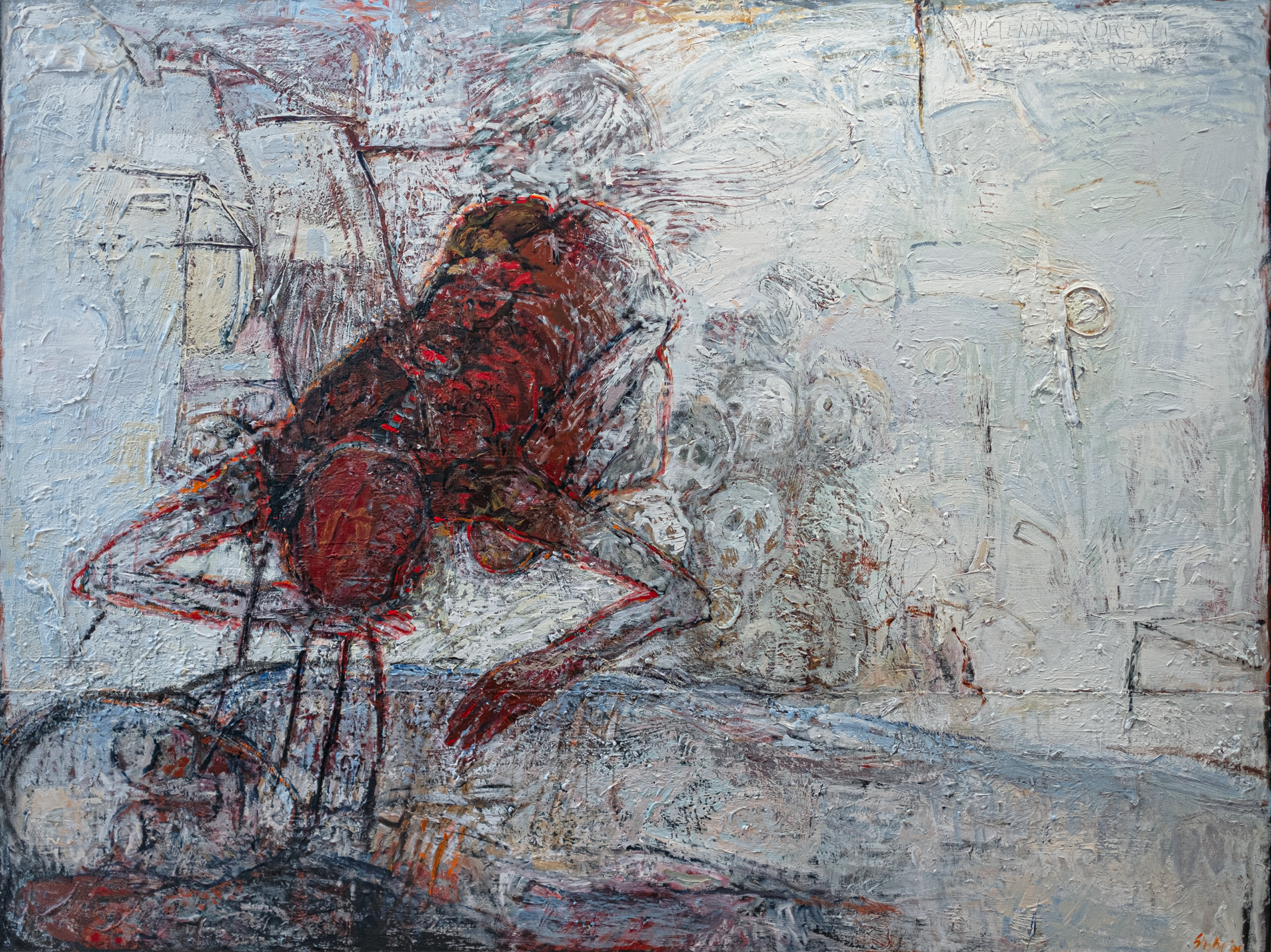
SHEBA SHARROW, "Millennium Dream" 2005, 56 x 76 inches, oil on canvas

